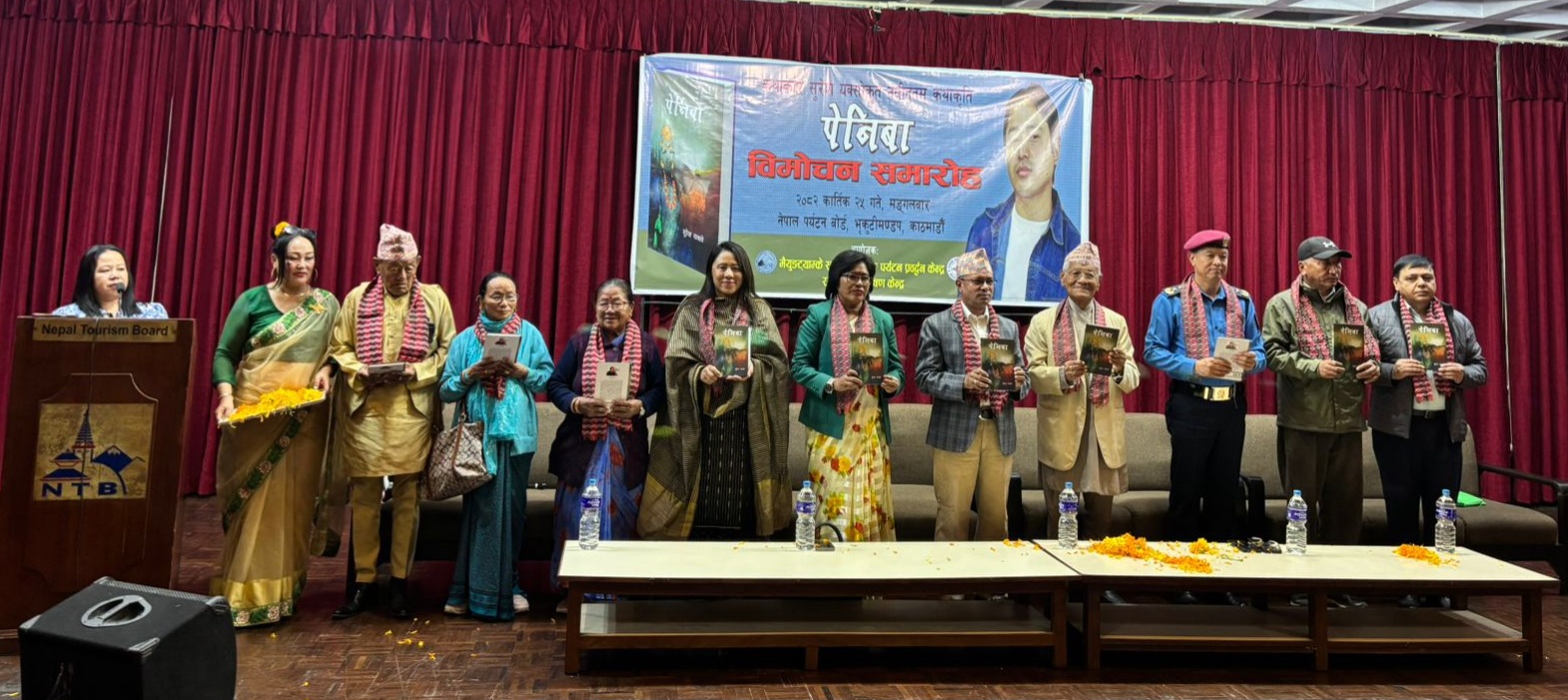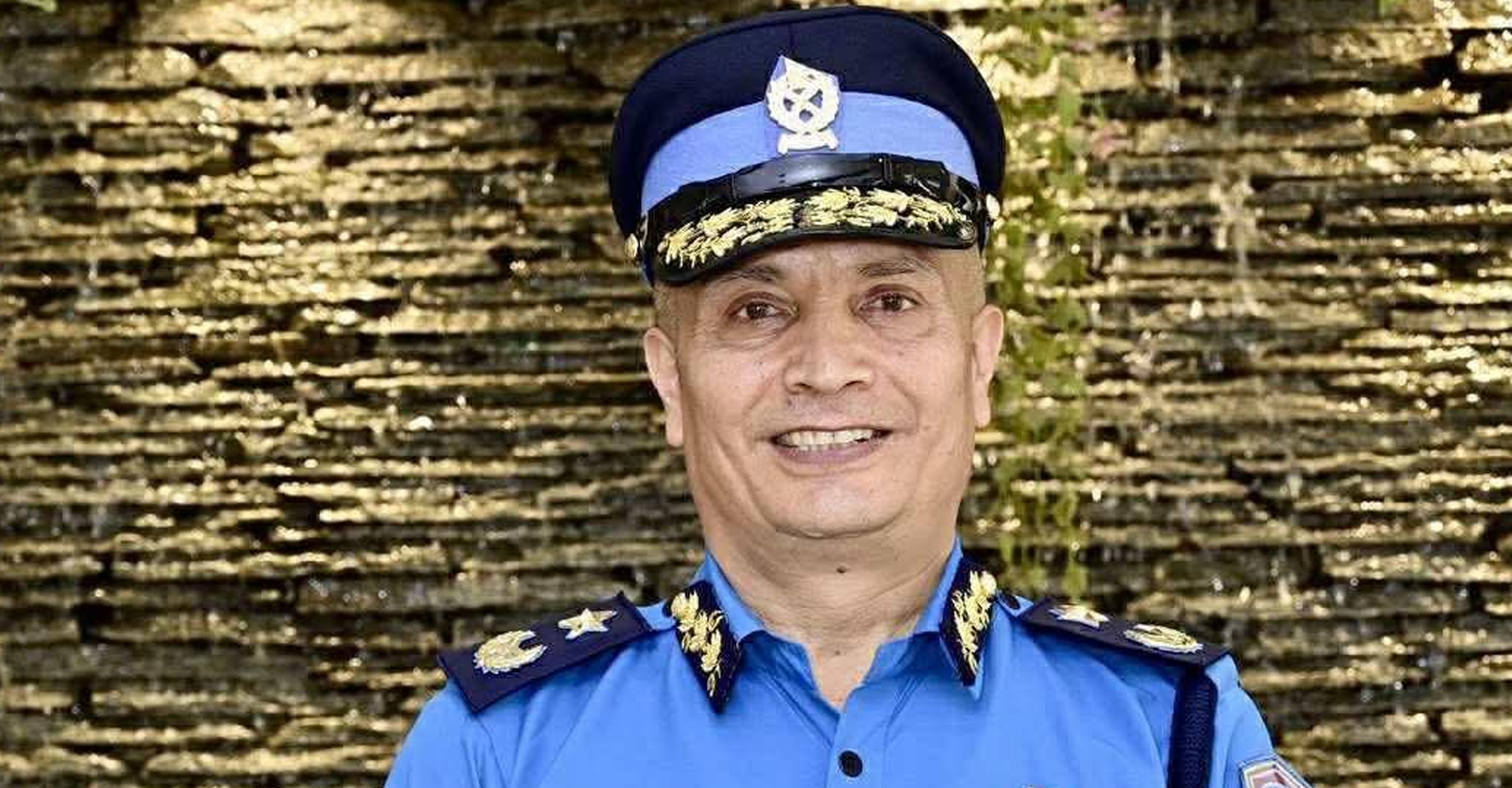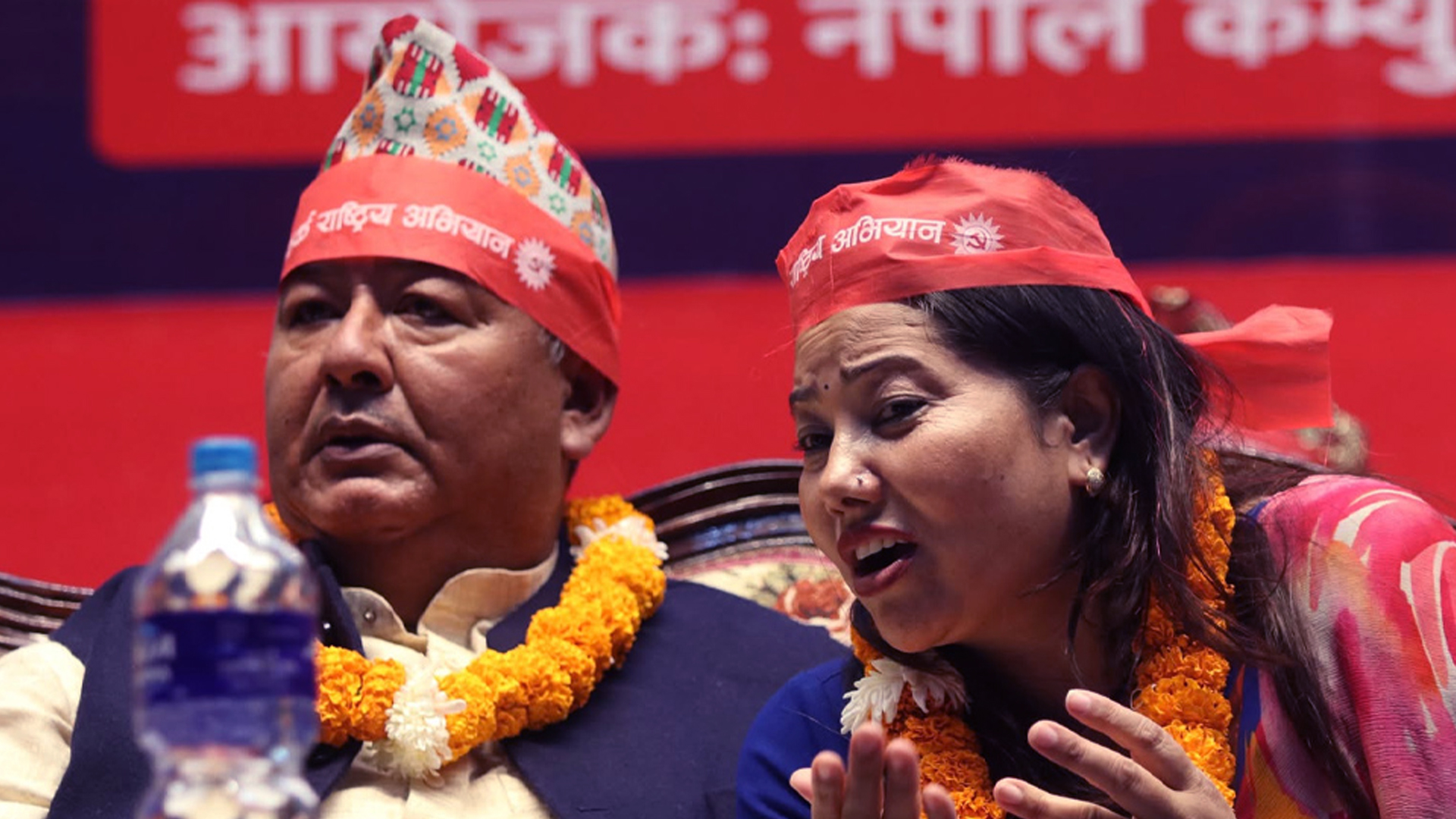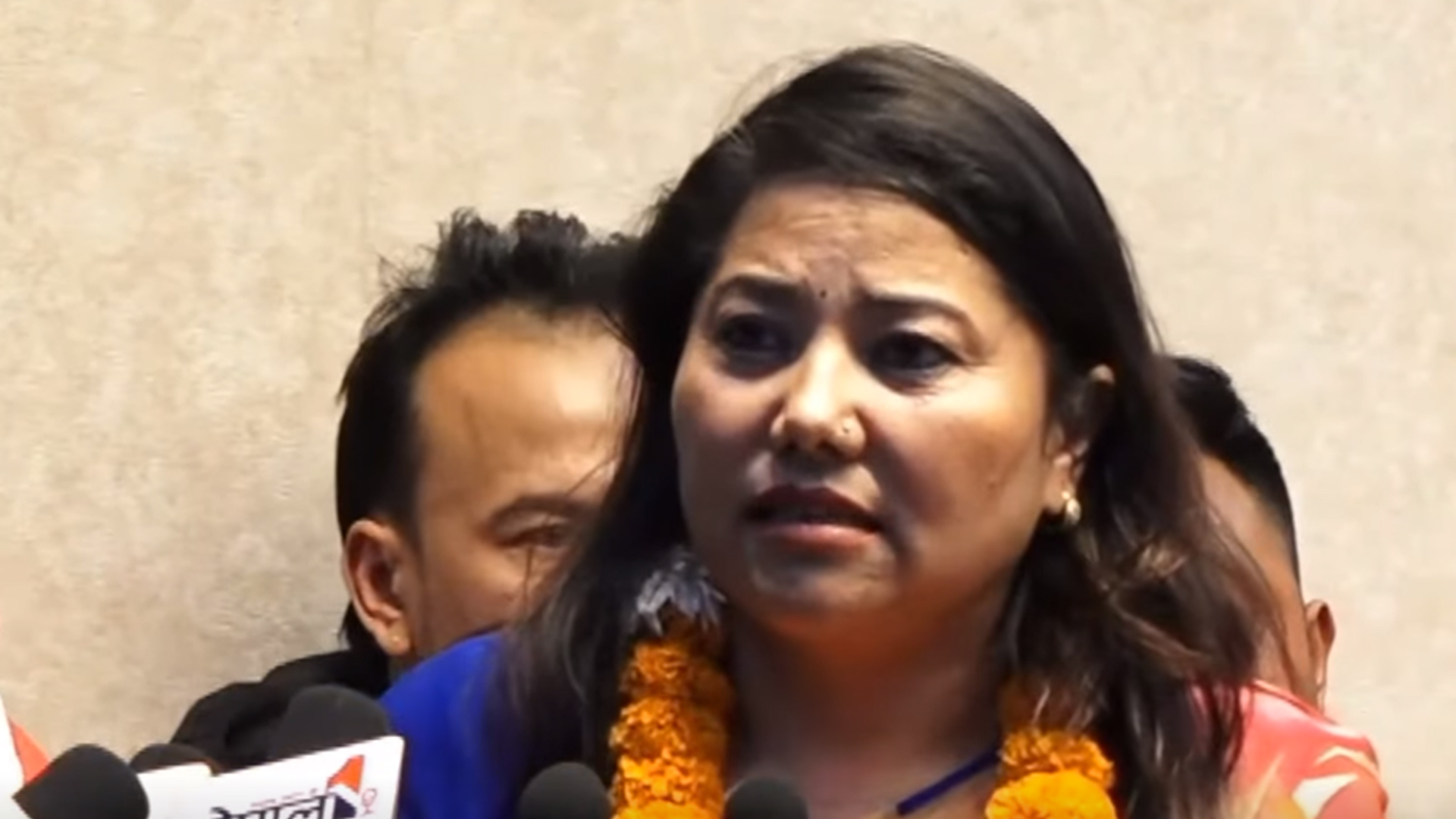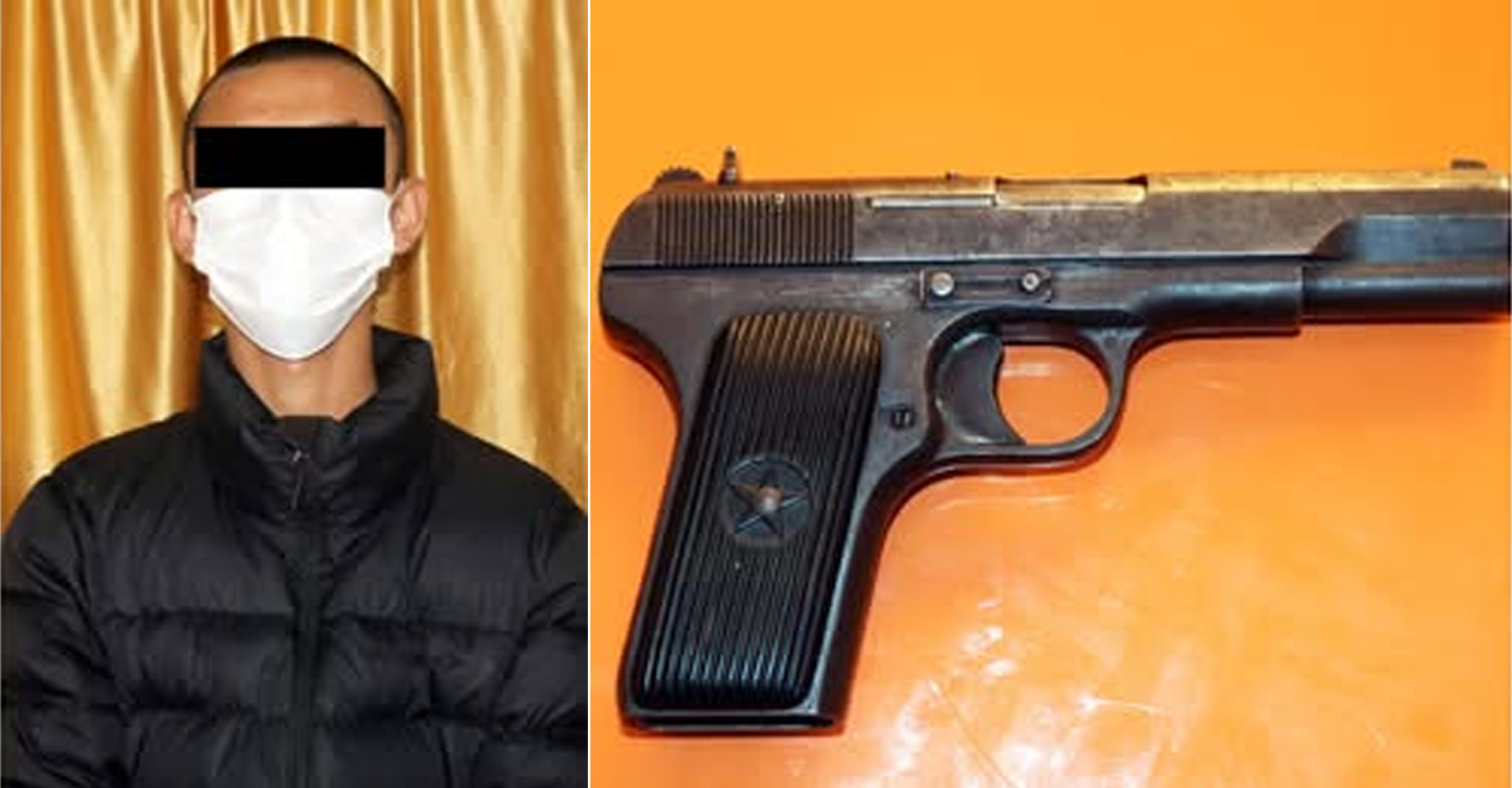 २०७९ कार्तिक २८
२०७९ कार्तिक २८
By Lila Seling Mabo
A Personal Memory and a tribute to the late Queen Elizabeth II
The Gurkhas have a long history of distinguished service to the British Crown. Starting with the 1816 Peace Treaty through to the end of the Indian Rebellion in 1857, when the Gurkhas became part of the British Army, to the present day. Even today new recruits swear allegiance to the Crown.
I remember clearly the last time I saw the Queen wearing a tartan skirt and holding her walking stick. She was pictured shaking hands with Ms Truss, as she became Her Majesty’s 15th Prime Minister. I discussed the news with colleagues. We all hoped that she would improve very soon.
On the way home in the car I watched Daily Mail live whilst my husband was driving. Many people were already saying she was dead and that an announcement would soon be made. I didn’t trust all the rumours and speculation and still hoped to see the Queen again.
As soon as I arrived home I turned on the TV immediately to check the news. Sadly the BBC announced that she had died at 5.30.I felt my heart pumping. Official sources announced that she had died peacefully at Balmoral Castle, her home in the Scottish Highlands. She was Britain’s longest serving monarch.
The Crown passes immediately to her son and heir Charles, who will now be officially known as King Charles III. The new King said his mother’s death was a moment of “the greatest sadness for me and all members of my family”. She is survived by her four children, eight grandchildren and 12 great-grandchildren.

Queen Elizabeth steered the country through turbulent times, as Britain’s Empire ended and its place in the world fundamentally changed. She was head of state of the UK and 14 other countries, including Australia, Canada and Jamaica.
During her 70 years reign Queen Elizabeth 11 oversaw many changes. Many people regarded her as a trail blazer. She was Head of State of the United Kingdom together with the Commonwealth, as well as many overseas territories. A wife, mother and grandmother. She was highly respected as a leader who did not enter into the political arena.
From an early age she was a very determined woman and insisted on having the word ‘obey’ left in the ceremony when she married Prince Phillip, even though she was the Queen of England. She epitomized a life of service to her people and was universally loved and respected all over the world.
Heartfelt condolences were received from many countries. All social events were cancelled, flower shops were emptied by people eager to show their respect and sadness at this time. I followed the BBC news throughout the whole day.
The Queen visited Nepal twice during her reign to show her appreciation for the Gurkhas regiments that serve her and the British crown. By contrast, no British Prime Minister has ever visited Kathmandu.
The BBC.CO.uk (2015) highlighted the two trips Queen Elizabeth made to Nepal in March 1961 and exactly 25 years later in 1986. These meetings were to meet with British Gurkha veterans who had served in the two World Wars.
Gurkhas have fought and died for Britain since before the end of Nepal’s war with the East India Company in 1816. After suffering heavy casualties during the invasion of Nepal, the British East India Company signed a peace deal in 1851 which allowed it to recruit from the ranks of the former enemy.
Following the partition of India in 1947, an agreement between Nepal, India and Britain meant four Gurkha regiments from the Indian Army were transferred to the British Army, eventually becoming the Gurkha Brigade. Since then, the Gurkhas have loyally fought for Britain all over the world.
More than 200,000 fought in the two world wars and in the past 50 years they have served in Hong Kong, Malaysia, Borneo, Cyprus, the Falklands, Kosovo and more recently in Iraq and Afghanistan.
It is estimated that 20,000 soldiers from Nepal fought and died in the First World War with the British Army; and over 20,000 were killed or wounded in the world war two.
12 Victoria crosses were awarded, five posthumously, at a time when Nepal’s total population was barely 4 million. During the Second World War Gurkha regiments were active in Italy, Burma and Malaya.
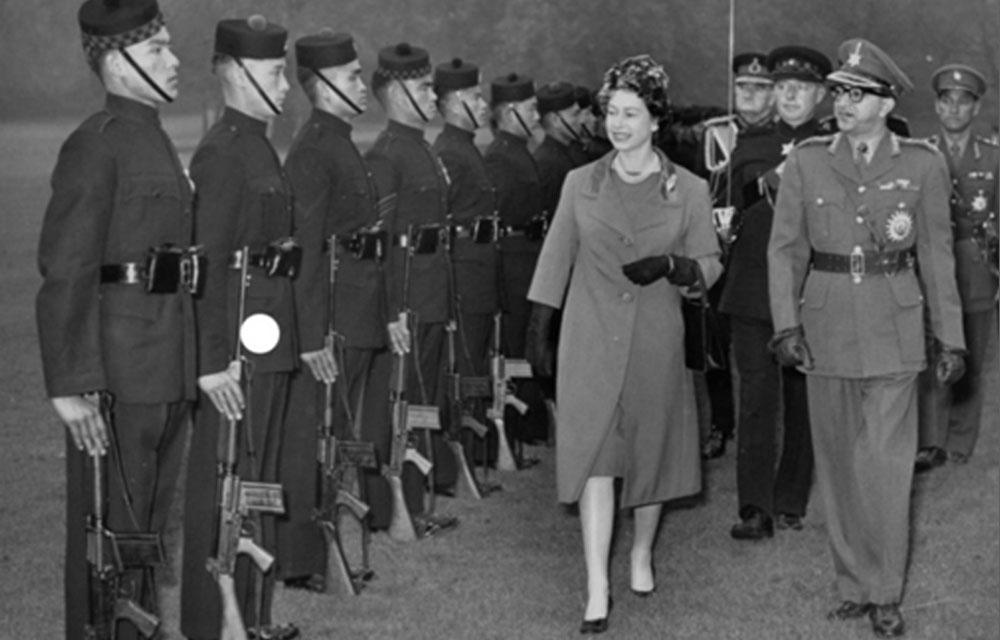
Nepalitimes.com (2022) highlighted that Queen Elizabeth’s 1961 visit to Nepal was touch and go since it happened barely a year after King Mahendra dissolved Nepal’s first democratically elected parliament, imprisoned Prime Minister B P Koirala and his cabinet, and ruled as an absolute monarch.
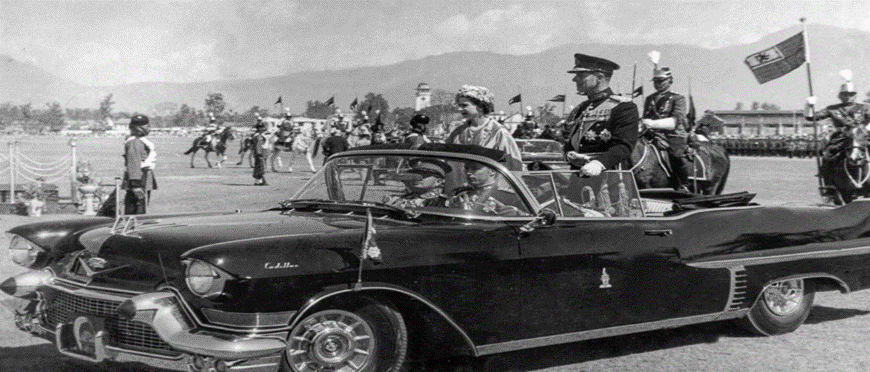
Over the course of her reign, the Queen was the most powerful person in Britain, but she was also one of the most inspiring women in the world.
She was the UK’s longest-serving monarch, recording 70 years on the throne. She hardly ever discussed women’s rights, but she inspired women everywhere throughout her reign.
I was fortunate enough to meet the late Queen Elizabeth 11 and Prince Phillip, together with Prince Charles and other members of the Royal Family on 12th April 2006 at the sovereign parade of Prince William at the Royal Military academy Sandhurst. At the time I was a member of the catering staff serving welcoming pre-drinks for the Royal Family. The Queen had a glass of water from my tray and thanked me with very nice smile and sweet voice. Prince Phillip also took a glass of water and he also thanked me. I felt so happy and honored to work at that place at that time. I was hoping to see the Queen again.
The Royal Family, including the Queen, were present to celebrate 200 years of the Gurkhas’ service to the UK in London in 2015.
Mr Katuwal said the Queen was a well-loved figure in his native country.
“Even in Nepal, she is like the mother of our nation.”
Gurkhas, Nepalese fighters in the British army, have close ties to the monarchy. The Queen had a “special bond” with the Gurkhas.
Although Gurkhas have been part of the British Army for almost 200 years, who are these fearsome Nepalese fighters?
“Better to die than be a coward” is the motto of the world-famous Nepalese Gurkha soldiers who are an integral part of the British Army.
They still carry into battle their traditional weapon – an 18-inch-long curved knife known as the kukri.
In times past, it was said that once a khukukri was drawn in battle, it had to “taste blood” – if not, its owner had to cut himself before returning it to its sheath.
Now, the Gurkhas say, it is used mainly for cooking.
The potential of these warriors was first realized by the British at the height of their empire-building in the last century.
The Victorians identified them as a “martial race”, perceiving in them particularly masculine qualities of toughness.
After suffering heavy casualties in the invasion of Nepal, the British East India Company signed a hasty peace deal in 1815, which also allowed it to recruit from the ranks of the former enemy.
Following the partition of India in 1947, an agreement between Nepal, India and Britain meant four Gurkha regiments from the Indian army were transferred to the British Army, eventually becoming the Gurkha Brigade.
Since then, the Gurkhas have loyally fought for the British all over the world, receiving 13 Victoria Crosses between them. More than 200,000 fought in the two world wars, and in the past 50 years they have served in Hong Kong, Malaysia, Borneo, Cyprus, the Falklands, Kosovo and now in Iraq and Afghanistan.
The Queen’s military appointments and her loyalty to the Gurkhas
Mel Bloor reports on the Queen’s many military appointments and honorary ranks and her strong connection to the Gurkhas. Itv.com news(2022) stated that As Sovereign, the Queen was head of all of the Armed Forces.
In 1945, as Princess Elizabeth, she joined the Auxiliary Territorial Service making her the first female member of the Royal family to join the armed services as a full-time active member. It was during her time there; she learnt to drive and maintain army vehicles.
Having served the British Crown for more than 200 years, the Gurkhas were held in high esteem by the Queen. Her Majesty was keen to recognize their traits of loyalty and dedication. At her request, Gurkha Orderly Officers escorted the Queen and stood guard as she awarded honors at Windsor Castle.
A Queen’s Gurkha Engineer said : “As a hill boy from a remote part of Nepal, to be selected for the Queen’s Gurkha Orderly Officers from the number of senior Gurkha officers to undertake that duty was just my wildest dream. When I met her she was always very calm and kind. It is very sad indeed to lose her because she has always been in the forefront of the Gurkhas and she always looked after Gurkhas and she always cared about the Gurkhas and their families.”
Darren Boyer, Director of the Gurkha Museum in Winchester, also met the Queen on a number of occasions and says her affiliation with the Gurkhas began early on in her reign.
“If we think when she came to the throne in 1952, it’s only five years on from the granting of independence to India.
At that stage there were ten Gurkha regiments in the British Indian Army – six of them stayed in India as part of the newly independent Indian Army and four of them became part of the British Army. Of those four, two already had Royal titles.
The 2nd were King Edward VII’s Own Gurkha Rifles and the 10th were Princess Mary’s Own and the 6th and the 7th didn’t have a Royal title and as early as 1959, the Queen bestowed on them – on the 6th the title Queen Elizabeth II’s Own and on the 7th, The Duke of Edinburgh’s Own, so those are real indications of how important she thought that affiliation was.
The Queen maintained a strong connection to the Gurkhas throughout her lifetime and will be remembered by them with the greatest affection.
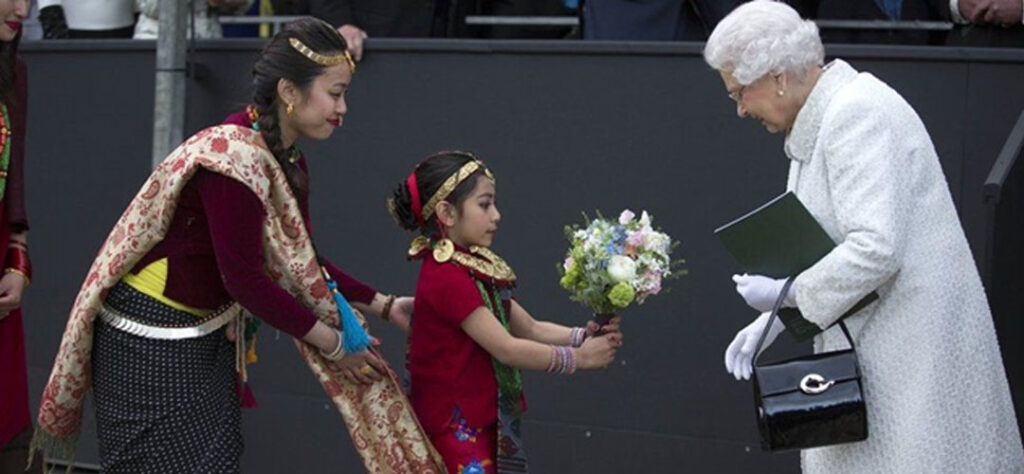
On Tuesday, 13/9/2022
Thousands lined the streets of Edinburgh to see the Queen’s coffin pass. I was at home on sick leave at the time. I was given a telephone appointment and told to send a photo-shoot of my throat. I was also asked to go to the GP surgery to collect some swab samples to send to pathology. I was therefore able to watch the TV all the time but it made me burst into tears all day, especially as I was feeling weak too!The Queen’s children, led by King Charles III, walked behind the hearse as it drove from the Palace of Holyrood to St Giles’ Cathedral. A service of remembrance was then held in the cathedral, where the Queen will lie at rest until Tuesday afternoon. It is estimated that approximately 20,000 people were in a mile-long queue throughout the night to pay their last respects.
All four of the Queen’s children – King Charles, Princess Anne, and Princes Andrew and Edward – later held a vigil for 10 minutes around the coffin of their late mother at the cathedral.
Following the public viewing the coffin left the cathedral at about 16:20 on Tuesday and was taken by road to Edinburgh Airport, before being flown on a C-17 Globe-master to RAF Northolt, near London.
It will go on to Buckingham Palace ahead of lying in state at Westminster Hall for four days (BBc.co.uk2022)
The Queen’s coffin arrived at Buckingham Palace to cheers from the crowd.
Alongside King Charles III, the hearse was received by the Princes William and Harry and other members of the Royal Family.
Thousands of people lined the 14-mile route as the hearse traveled from RAF Northolt in west London.
The death of her Majesty, the Queen
We are currently in a period of national mourning, following the King’s announcement concerning the funeral of her Majesty. This moment is making me feel very sad.
On Wednesday, 14/09/2022 the Queen’s coffin left Buckingham Palace BBCUK (2022) showed “a moment of symbolic unity, as Prince William and Prince Harry walked side by side behind the Queen’s coffin as it left Buckingham Palace. Along with King Charles and other members of the Royal Family, they progressed to Westminster Hall where the Queen will lie in state.
The sight of the brothers together, walking behind the coffin, will evoke poignant memories of their mother Diana’s funeral 25 years ago.
Crowds applauded the solemn procession.
The Queen’s coffin, carried on a gun carriage, passed below the Buckingham Palace balcony where only three months before she had appeared for the final moments of the Platinum Jubilee celebrations. “
Bandsmen played somber music to accompany this careful choreography of mourning, Beethoven and Mendelssohn alongside the drumbeat of marching feet – exactly 75 steps per minute – and the sound of horses’ hooves in the autumn sunshine.
The same gun carriage had carried the coffins of the Queen’s father and mother – and as it went past there were ripples of applause and some tears from people crowding along the route.
Walking on foot behind the coffin were the Queen’s four children, King Charles, Princess Anne and Prince Edward, in military uniform, with Prince Andrew, no longer a working royal, in a morning suit and wearing medals.
And behind them were William, now Prince of Wales, and Prince Harry, the Duke of Sussex, also as a non-working royal not wearing military uniform.
This time the brothers were side by side, unlike Prince Philip’s funeral last year when they had someone walking between them, in what was seen at the time as a sign of separation.
Today’s procession was another national moment. Crowds held up mobile phones to capture a glimpse of history taking place before them. Big Ben rang out around the streets, tolling each minute. Queen Elizabeth had left Buckingham Palace for the very final time.
Her connections with the palace went back across the eras. She’d been christened there 96 years ago and there were guests in that family photo who had been alive at the same time as the Duke of Wellington, victor of Waterloo.
The coffin has been covered with the emblems of the monarchy, the Royal Standard and the Imperial State Crown. But there are also personal connections in the flowers in the wreath. Along with white roses and white dahlias there was pine from Balm-oral and lavender and rosemary, a symbol of remembrance, from the gardens at Windsor.
Gurkha veterans paid their respects to the Queen at the Gurkha memorial in Folkestone, describing-the event Dhan Gurung, from the Gurkha Memorial Fund, said: “I feel I lost my parents because she was so kind-hearted.”Gurkhas from Maid-stone will march in the funeral procession when the nation bids farewell to the monarch. Maj Deb Bahadur Pun, now retired, said he had served for 28 years in the British Army and he “came here to respect the Queen”. The late monarch was a well-loved figure in Nepal – visiting the Himalayan country twice during her reign. Shiva Dhan Raj, a veteran from the Gurkha Rifles, said the Queen’s death had been met with sadness and the veterans had been “honored to serve” her.Gurkhas have served as part of the army for more than 200 years.

Monday 19 /9/2022 ceremony and sorrow for the nation and the world.
Everyone is sad and very emotional, Woke up early morning to see the final good bye for the late Queen Elizabeth 11. I decided to see all coverage on TV because I couldn’t cope standing in a very long queue in London. The weather was cool not too cold and not hot. I was feeling that the world was in a quiet motion at this moment. Everyone’s eyes were brimming over as the coffin was driven away. She is such a special person for the world. Millions of people across the globe tuned in to watch the state funeral of Queen Elizabeth II on Monday. World leaders and royalty descended on London to pay their respects as part of a memorial like no other in modern history. Thousands lined the streets of the capital in order to have one last glimpse of the monarch’s coffin before she is laid to rest this evening. Queen Elizabeth was born in 1926 and came to the throne in 1952. She died at Balm-oral Castle on September 8 aged 96 – after 70 years on the throne.
Thousands of mourners traveled to the capital, lining the Mall and streets around Westminster Abbey. Before the funeral, soldiers and sailors marched to Parliament Square as well as marching bands.The crowd around the edges of Parliament Square fell to a hush as a contingent of the Scots Guards and Royal Navy filed past. Many people lifted phones high above their heads to capture the scene, with an hour to go before the funeral started.
World Leaders Arrive at Westminster Abbey
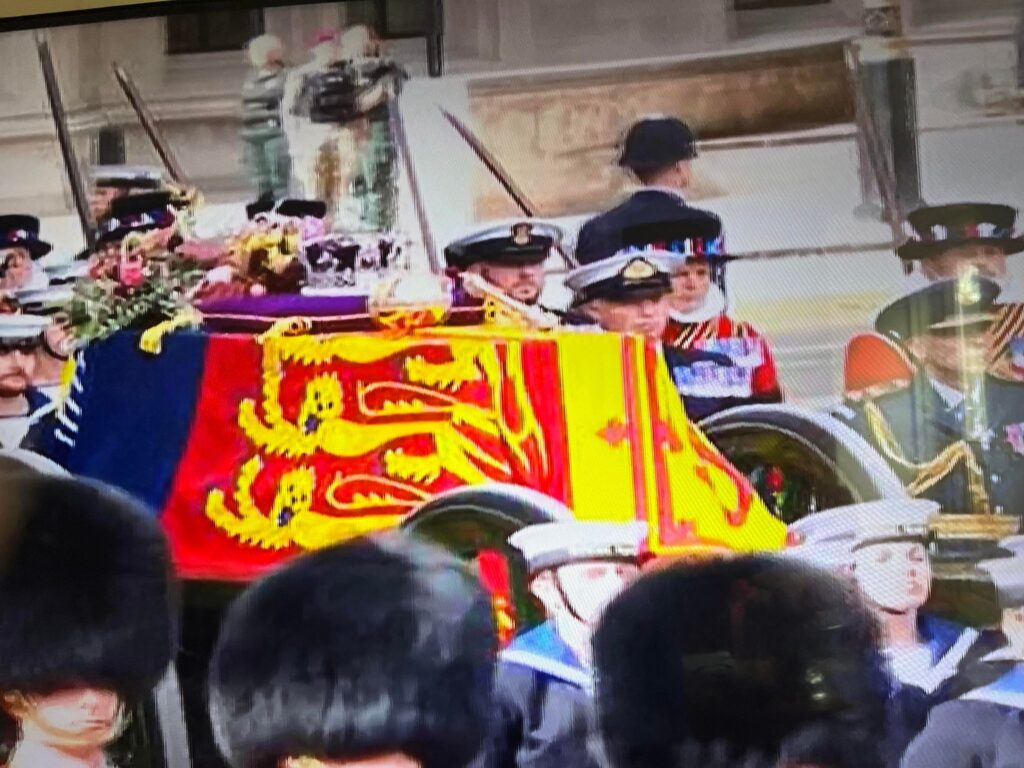
The Queen makes her final journey to Windsor Castle …
where a committal service for the Queen will take place before she will be laid to rest in St. George’s Chapel. The service will be private but some of her loyal attendants who served throughout her life will be allowed to take part.
The Queen will be interred alongside her husband the Duke of Edinburgh at a private burial.
The hearse arrived in Windsor following her state funeral service at Westminster Abbey in London.
It progressed through the Berkshire town, with flowers still on its bonnet and roof from well-wishers who had thrown them as the royal cortege made its way from Wellington Arch.
The route avoided motorways to allow as many people as possible to pay their last respects.
Thousands of people on that route broke out into applause as the hearse passed them.
The procession made its way about one mile along the Long Walk up to Windsor Castle, with members of the Armed Forces lining the way.
King Charles III then walked behind his mother’s coffin, accompanied by the Queen’s other children
The Queen’s coffin, draped in the royal standard with crown, orb and scepter atop, was lifted from the state hearse into the chapel where it sat on a catafalque.
Guests at the service include the late Queen’s staff past and present, alongside prime ministers of countries of which the monarch was head of state.
In a touching gesture, the Queen’s faithful corgis Muick and Sandy also made an appearance at the castle.
Later at a private burial service, the Queen will be laid to rest with her late husband Prince Philip in the King George VI Memorial Chapel. That service will only be attended by the Royal Family.
Earlier, King Charles III walked behind his mother’s coffin as it processed from Westminster hall to the abbey.
About 2,000 people gathered at the service, including world leaders and royalty.
This was the first state funeral since Sir Winston Churchill’s in 1965 and was the biggest ceremonial event since World War Two.
I kept watching every second of this final funeral service because my family and I will probably never see such a big and special popular funereal. Watching this ceremony made me feel so sad for the loss of our late King Birendra Bikram shah and all his family in 1st June 2001. They did not have a chance to be seen by the public. Most of the public did not know and so were unable to pay tributes to the late royal family.
The Queen maintained a strong connection to the Gurkhas throughout her lifetime and will be remembered by them with the greatest affection.
When I met in a person the late Queen Elizabeth II, her husband, Prince Philip, including other members of the Royal Family during my work ten years ago, I still hoped to see the her again. For my family and myself watching this ceremony all day made us all sad. I did not realise that my top was completely wet with tears. The final closing music for the queen in Windsor Castle was so emotional my husband and myself cried loudly in our TV room.
I kept on hearing about the queen from my childhood. My grand-father, an ex-Gurkha soldier, used to tell me a lot about the Queen Elizabeth before I came to the UK. She had an amazing life. The world will never be the same again.
Reference:
BBCUK (2022) the Queen’s coffin left Buckingham Palace https://www.bbc.co.uk/news/uk-62866247 [Acceessed on, 19/9/2022]
https://www.nepalitimes.com/banner/queen-elizabeth-the-gurkhas-and-everest/#:~:text=T,1953%20that%20year. [Accessed on,19/9/2022]
BBCUK (2022) Gurkha veterans pay their respects to monarch. https://www.bbc.co.uk/news/uk-england-kent-62890593 [ Accessed on,19/9/2022]
Itv.com (2022) The Queen’s military appointments and her loyalty to the Gurkhas. itv.com/news/meridian/2022-09-11[Accessed:23 October 2022]
She made an amazing history
. https://www.bbc.co.uk/news/uk-scotland-62887444
https://www.bbc.co.uk/news/uk-62955606?at_medium=RSS&at_campaign=KARANGA (accessed on,19/9/2022)
